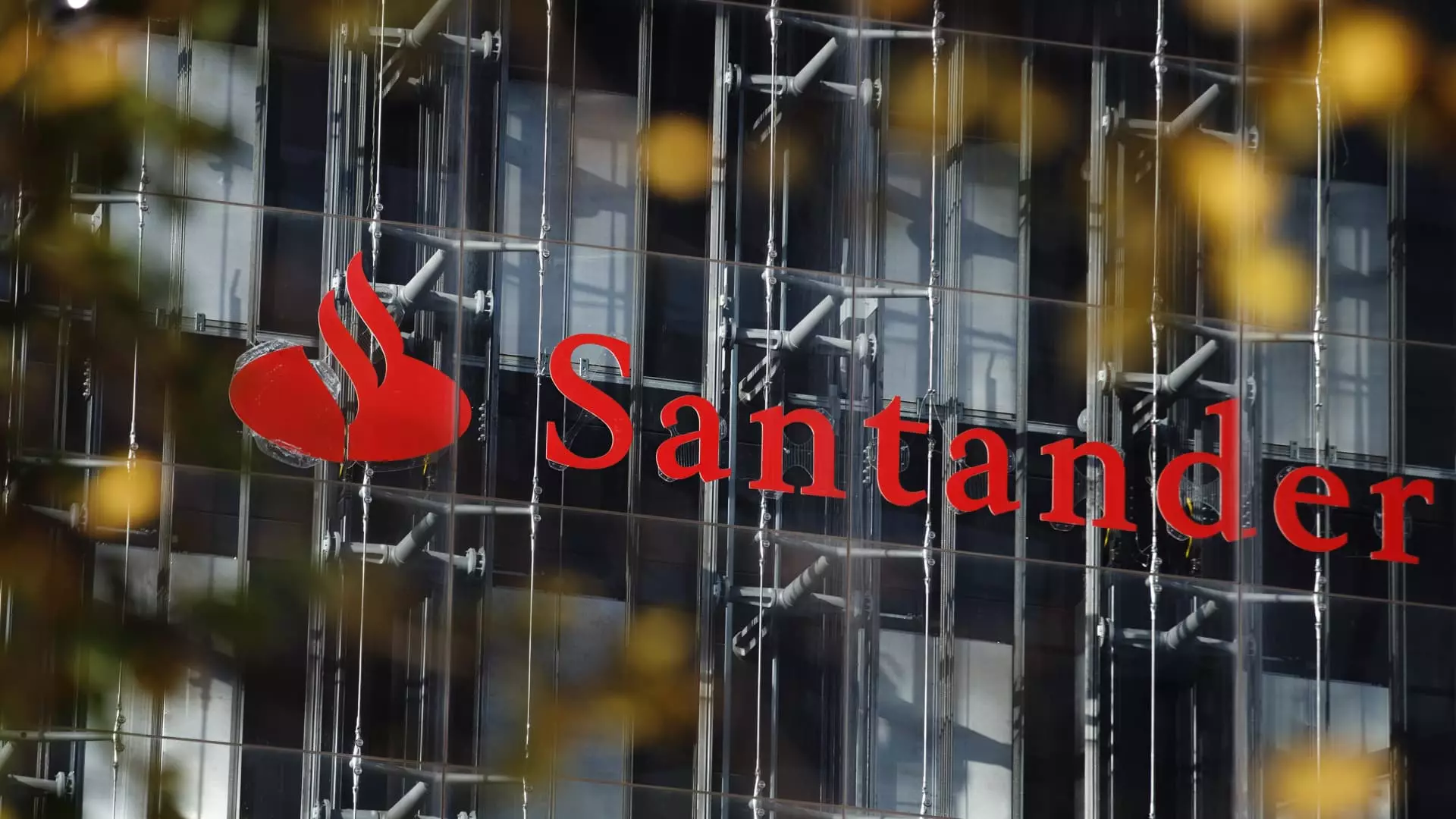The world of finance is rarely static, but recent developments in the European banking sector have sent shockwaves through the industry. The ascension of Banco Santander, now crowned as the largest bank in continental Europe by market capitalization, eclipsing the once-mighty UBS, is both alarming and revelatory. As we navigate the complexities introduced by U.S. tariffs and a seemingly chaotic international landscape, it becomes essential to dissect the factors that have propelled Banco Santander to its current status while simultaneously causing UBS to falter.
Challenges like these often illuminate underlying issues—legacy structures, lack of adaptability, and strategic myopia. Santander’s ability to grow its market value almost 35% this year suggests a resilience that UBS lacks in these turbulent waters. This juxtaposition highlights the dynamics that are transforming the continent’s banking framework, bringing us to the core of why this shift warrants careful scrutiny.
The Role of U.S. Tariffs
The imposition of tariffs by the U.S. has acted like a double-edged sword, slashing through the profitability of European banks. Banco Santander has been well-positioned to withstand these pressures. The bank’s profile as a smaller player in the U.S. market—despite being the fifth-largest auto lender—has allowed it to rely more heavily on its diversified business strategies across various regions. In stark contrast, UBS’s heavy dependence on its global wealth management division, particularly in the Americas, highlights the dangers of putting too many eggs in one basket.
The 20% tariffs initially imposed on imports from the European Union seemed to favor banks with a broader global reach but have proved to be a costly blunder for UBS. The uncertainty surrounding U.S. policies continues to exacerbate UBS’s vulnerabilities, pushing the bank to shed 17.2% of its market share this year. What’s clear is that Santander’s tactical agility has outwitted the sluggishness and over-reliance that have now become UBS’s Achilles’ heel.
The Currency Conundrum
Another striking issue in this financial saga is the strength of the Swiss franc. Historically viewed as a safe haven, the currency’s latest surge by approximately 8% against the U.S. dollar comes with unexpected ramifications for the Swiss economy. For UBS, this translates to higher operating costs and diminished competitiveness in the global market. The Swiss National Bank’s potential interest rate cuts—already set at a meager 0.25%—could further hamper growth, leaving UBS in a precarious position.
Meanwhile, Santander’s relative indifference to these macroeconomic pressures serves as a testament to its robust financial health and competency. This growing divergence between the two banks reinforces the narrative: adaptability and resilience in an uncertain marketplace will ultimately decide the victors in this ongoing financial drama.
New Initiatives and Opportunities
The situation commands attention not only because of its immediate effects but also due to the potential long-term implications. Banco Santander has been proactive, notably through its recent partnership with telecom giant Verizon, an initiative that broadens its engagement and reinforces its foothold in an increasingly digital landscape. On the other hand, UBS appears mired in uncertainty, grappling with the repercussions of absorbing Credit Suisse and now facing potential new capital requirements from Swiss authorities.
The banking sector’s renewed focus on defense spending, bolstered by the European Union’s ReArm initiative, presents unique opportunities to banks like Santander, which must carefully navigate fiscal policies to take full advantage. UBS must act swiftly to adapt, lest it be left behind in this rapidly evolving environment.
The Path Forward
As Europe grapples with trade tensions and economic upheavals, the tale of Banco Santander and UBS serves as a cautionary one. The diverging trajectories of these two financial giants underscore the necessity of adaptability in an industry often resistant to change. The financial ecosystem thrives on innovation, and it’s incumbent upon legacy players like UBS to evolve, lest they become relics of a bygone era.
In this climate of uncertainty, Banco Santander’s triumph exemplifies the importance of staying nimble and responsive, illustrating that the future of banking cannot rely solely on historic prestige but must integrate foresight and modern capabilities. The stakes are high; the question remains whether UBS can recalibrate its course or if it will succumb to the pressures of a new financial world order.

